List of all original Apple-1.
If you are a first time visitor and not familiar with iconic Apple-1 computers, please read all the information first.
Go to previous entry #76 - Go to next entry #78
Note: This is the 77th entry in the list, and not the 77th Apple-1 produced. The Apple-1 does not have a regular serial number. Only some Apple-1 have a handwritten serial number.
 Apple-1 #77 "0074", 1st batch, serial number 01-0074
Apple-1 #77 "0074", 1st batch, serial number 01-0074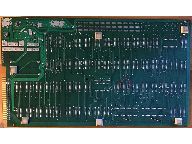 Apple-1 #77 "0074", 1st batch, serial number 01-0074
Apple-1 #77 "0074", 1st batch, serial number 01-0074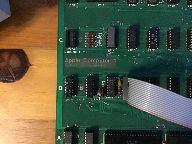 Apple-1 #77 "0074", 1st batch, serial number 01-0074
Apple-1 #77 "0074", 1st batch, serial number 01-0074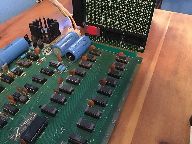 Apple-1 #77 "0074", 1st batch, serial number 01-0074
Apple-1 #77 "0074", 1st batch, serial number 01-0074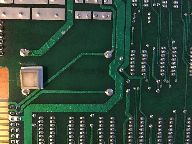 Apple-1 #77 "0074", 1st batch, serial number 01-0074
Apple-1 #77 "0074", 1st batch, serial number 01-0074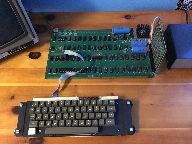 Apple-1 #77 "0074", 1st batch, serial number 01-0074
Apple-1 #77 "0074", 1st batch, serial number 01-0074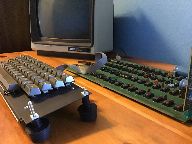 Apple-1 #77 "0074", 1st batch, serial number 01-0074
Apple-1 #77 "0074", 1st batch, serial number 01-0074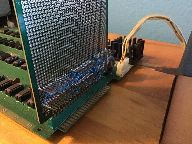 Apple-1 #77 "0074", 1st batch, serial number 01-0074
Apple-1 #77 "0074", 1st batch, serial number 01-0074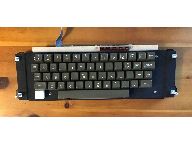 Apple-1 #77 "0074", 1st batch, serial number 01-0074
Apple-1 #77 "0074", 1st batch, serial number 01-0074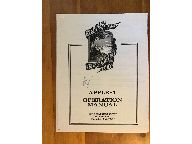 Apple-1 #77 "0074", 1st batch, serial number 01-0074
Apple-1 #77 "0074", 1st batch, serial number 01-0074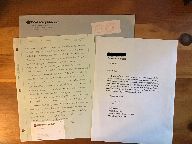 Apple-1 #77 "0074", 1st batch, serial number 01-0074
Apple-1 #77 "0074", 1st batch, serial number 01-0074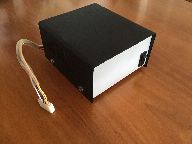
The serial number on the back of the Apple-1 was most likely written by Steve Jobs. According to available information, a forensic analysis has not yet been performed for this Apple-1. However, for some other Apple-1s with a serial number on the back, it has been confirmed that it is Steve Jobs' handwriting. More information.
The owner wrote a very detailed and remarkable report about the history of this Apple-1 just for the Apple-1 Registry.
From the owner (he is known to Achim Baqué but would like to remain anonymous):
The story of this Apple-1 is similar to that of a rescued dog.
The Apple-1 Appears
In the early 80’s, I worked as a store manager for Computer Merchant in Escondido, CA, an exclusively Apple computer store. In 1984, a customer came in and told me he had an Apple-1. He wanted documentation and any other information that might be available. I said I would try to find some. I had heard about the Apple-1, had seen one photo, and didn’t know much about it but always assumed there had to be a computer before the Apple II. I asked all my contacts at Apple trying to find information, but couldn’t. I did learn there were very few ever made.
The next time the customer came in, we talked more about his interest in the Apple-1. He said he bought the Apple-1 board, with several missing parts, from a used electronics store. He was interested in it partially because he had worked for Motorola in Arizona, where they developed the 6800 microprocessor, and saw that the Apple-1 could optionally work with a 6800 instead of the standard 6502. He wanted to build a system for controlling his home lights, turning them on and off and such. I offered to buy it, but made sure to tell him I thought it could be a valuable collector’s item one day.
The customer returned another day and said he learned Radio Shack could sell him a device for controlling his home, and it was currently on sale. He agreed to sell the Apple-1 to me for the price of that device, \$59.95 plus tax. I again told him I thought it could be more valuable, but he said he was satisfied with that amount. So I purchased it for \$63.55 on April 6, 1984.
The Beginning
I was determined to restore this computer to working order. But almost half of the chips were missing including all the RAM chips and both the A1 and A2 PROMs. There was no documentation, and I didn’t know how to find any. The name of the original owner, and why it had been raided for parts and abandoned like an unwanted dog may always be a mystery.
Getting Help
Many friends and kind people helped me along the way. A tech support person from our Apple representative told me he once had an Apple-1 but traded it to Apple for an Apple III and a Hayes Modem. He was the first person to give me copies of his original documentation including schematics. He also told me an Apple II keyboard could be used if I changed the wiring of the cable. Now I could begin to figure out how to restore it to working order.
Apple II Forever
Apple held an event for the press and Apple Dealers April 24, 1984 called Apple II Forever. The speakers included Steve Jobs, John Scully, and Steve Wozniak. The event was meant to introduce the new “portable” Apple IIc computer, and also to let customers know that the Apple II platform would continue even after the introduction of the Macintosh earlier that year. There was a small Apple Museum display we could walk through, which looked like the inside of a garage with exposed 2 x 4’s and garden tools. Meant to evoke Apple’s origins in a garage, the display featured two Apple-1 computers. Neither of them turned on.
Chris Espinosa
I met Chris Espinosa, Apple employee #8, at an Apple employee training class called Apple University sometime in May 1984. I was there as one of two invited Apple dealers to contribute our perspective to the new Apple management employees. Chris Espinosa was in the class. Although he had worked for Apple since the earliest days, he said he had never had any employee training and signed up for the class just to see what it was about. An extremely likable guy, he had to be the most enthusiastic student during the class. I introduced myself and got his contact information hoping he might be able to help with my Apple-1 restoration. When I contacted him later, he told me he had been in charge of creating the Apple Museum display I had seen, which was now in their headquarters, and neither of the Apple-1’s worked. He said Apple had to go out and purchase these when they decided they needed a display of their history. He also said a few unsold Apple-1 boards had the power supply corner chopped off and were used for other breadboarding projects. But the best thing was, he referred me to Bill Fernandez and Dan Kottke who he said could answer more questions than he could.
Bill Fernandez
I wrote to Bill Fernandez, Apple employee #4, in June of 1984 who sent me Xerox copies of his Apple-1 documentation which were much better copies than what I had. He said he could not supply the Programmable Read Only Memory (PROM) listings because, “I do not have time to get a listing of the PROM’s,” and “I will not let the PROM’s out of my hands.” But I thanked him for the nice looking docs.
Dan Kottke
Also in June of 1984, I talked on the phone with Dan Kottke, Apple employee #12. It was his last day at Apple and while cleaning out his desk, he had come across what he called, “…probably the last set of Apple-1 PROMs in existence.” He sent me the A1, A2, A3, and A4 PROMs, which included those for the cassette interface, and a copy of Apple-1 BASIC on an Apple II floppy disk modified to run from a 2732 EPROM (erasable PROM) mounted in the Apple-1 expansion slot. He said Steve Jobs was tired of loading BASIC from cassette and just wanted it built in. These two pieces were key to my being able to get my Apple-1 working.
Putting It All Together
A friend who worked as a repair tech at the computer store I worked in owned an EPROM burner that attached to his Apple II and could burn the Apple-1 BASIC for me. He also taught me wire wrapping, which was used to create the expansion card, which is really just a blank card with EPROM sockets. Another friend had hardware experience as well and both of these friends had oscilloscopes, and more importantly, knew how to use them. It was a matter of putting all the parts together, using the docs to determine how to place the jumpers for addressing the RAM chips and the EPROM card and some troubleshooting before we finally got it to work. Running down the various parts was a challenge because in 1984 many of the chips required were already obsolete. Luckily, my experience from the computer store meant I knew various suppliers in town, and one in particular which I knew had a lot of old inventory. Some correspondence I have shows I was still trying to find some of the parts in late 1985. But eventually, we got it working in either 1985 or 1986.
Steve Wozniak
In late 2000, having moved to Oregon, I attended an event called “You Don’t Know Mac,” an Apple trivia contest sponsored by the Portland Mac User Group. The special guest speaker was Steve Wozniak. I brought my Apple-1 manual along and got his autograph on it. I also exchanged a few emails with him around that time asking for help with a final problem I was having involving multiple cursors on the screen. He gave me some tips, but I couldn’t solve it at the time. However, hitting Return and Reset over and over would eventually get a single cursor to synchronize, then everything worked fine.
Apple-1 Registry
I knew of the existence of the Apple-1 Registry for many years, but always wanted to remain under the radar. So I’ve finally put together this history and a set of photos to share.
no auction
(see History for more information)
Plastic CPU from 1984, plastic PIA from 1987, 8 KB ceramic RAM from the 80s. Many chips were added in the 80s.
Wire wrap card with BASIC EPROM. Operation manual (possibly a photocopy) signed by Woz in late 2000 (more information in the history section). Unique letters from Daniel Kottke and Bill Fernandez from 1984.
Breadboard unused. Added red wire on the back. Serial number faded.
Not working but probably due to a small problem. Sometimes it works.
Jul 27, 2025
Jul 18, 2018: Newly added to the Apple-1 Registry
Aug 11, 2018: 1 picture(s) added
Nov 13, 2018: Description of picture(s)/video(s)
Nov 13, 2018: State
Feb 15, 2019: Geo location added
Jun 21, 2019: Description of picture(s)/video(s)
Nov 16, 2021: Working condition
Jul 27, 2025: State. Equipment. History
We appreciate your help:
Please spread the word about the Apple-1 Registry by adding a link to your social media account and/or website. Contact us if you have new information about any Apple-1 or Apple-1 (parts) for sale.
You can link to the Apple-1 Registry. Any form of reprint or reproduction (including excerpts) is only allowed with written permission from the Apple-1 Registry.
Here you will find press releases and images free to use under CC BY-SA 4.0.